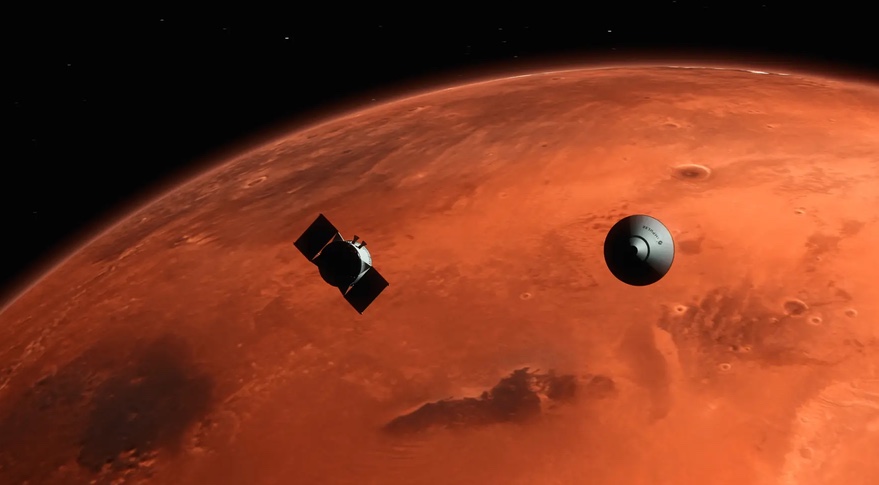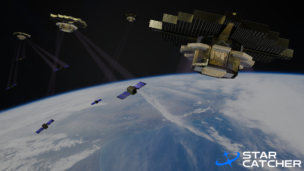Last week, Relativity Space and Impulse Space announced a partnership to launch the first private mission to Mars. To much fanfare, the two startups say they’ll try to launch a Red Planet lander as early as 2024.
Under the agreement, Relativity will launch Impulse’s Mars Cruise Vehicle and Mars Lander on the 3D-printed Terran R rocket from Cape Canaveral. Terran R will enter a trans-Mars injection (TMI) orbit, and once there, Impulse’s aeroshell-equipped Mars Lander will attempt a propulsive landing on Mars’ surface. The Relativity/Impulse Mars partnership runs through 2029.
The 2024-2025 timetable merits a healthy dollop of skepticism. But as Ars Technica recently wrote, “this announcement—audacious though it may be—is probably worth taking seriously because of the companies and players involved.”
- Relativity is progressing toward its first orbital launch attempt with the Terran 1 rocket. It should announce a launch date in the coming weeks, Relativity CEO Tim Ellis told Payload on a recent taping of the Pathfinder podcast.
- Impulse is led by Tom Mueller, who was on the founding team of SpaceX. The startup’s short-term focus is last-mile delivery services in LEO, along with in-orbit servicing, debris deorbiting, and space station orbit-keeping.
Payload briefly caught up with Ellis to discuss the mission, scaling up production in Relativity’s new 1M square foot facility, and Terran R. NB: This interview was lightly edited for clarity and length.
What does this partnership and deal represent, in terms of Relativity’s long-term mission?
This is our first, concrete step towards establishing an industrial base on Mars, which has been our mission from day one. Relativity was created with the goal of building a multiplanetary future for humans, and this partnership rapidly advances us towards making that a reality.
No two Terran R launches will be the same. That said, how much different is the Mars mission with Impulse?
What makes this mission different is that it’s focused on multiplanetary transport, not satellite launch services. But the same core capabilities for Terran R are required for both kinds of missions. That’s why we designed Terran R to be fully reusable. It’s a unique challenge for sure, but an important one we feel confident in tackling.
On production…
Relativity has yet to conduct an orbital launch attempt (though I know it’s coming soon). Do you worry that a Mars mission may distract the company from scaling up production?
Our mission has always been Mars. So, we don’t see this as a distraction–it’s about delivering on what we set out to do when we started the company. To be clear, we’re heads down focused on launching Terran 1, the first 3D printed rocket, this year, because that’s of the utmost importance and helps us build up towards Terran R and this mission.
As I’ve heard before, it’s not making the first rocket that’s the hard part, it’s making the next 10. Any thoughts here?
In terms of scaling production, we’re close to finishing printing the next Terran 1 vehicle for our NASA VCLS 2 mission, and have already started installing our new fourth generation Stargate metal 3D printers in our 1M+ square foot factory in Long Beach, which is dedicated to printing Terran R vehicles. We’ve also signed five customers for Terran R, including a multi-launch agreement with OneWeb, totaling more than $1.2B in backlog.
“Aggressive, but possible”
How razor-focused are the Relativity and Impulse teams on making the next Mars window? Obviously, a slip and then having to wait a couple more years wouldn’t be ideal.
Our launch window is aggressive, but possible–and we’re confident that we’ve got a solid shot at making it happen. The partnership agreement is also in an exclusive arrangement until 2029, with launch windows occurring every two years, so we’ll have multiple launch options, as well as opportunities for repeatable commercial missions to Mars, making a serious business out of scheduled payloads to the Red Planet.




